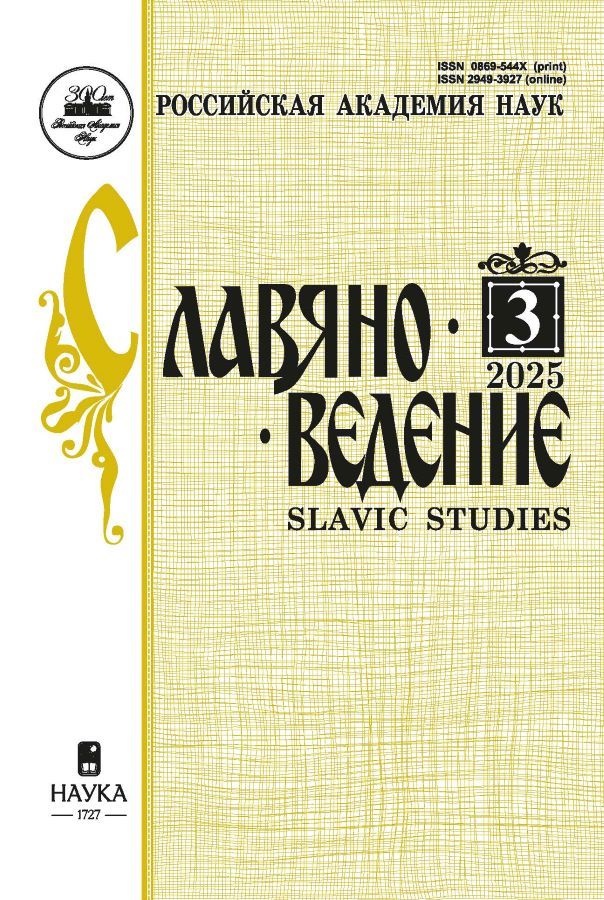Non-agent constructions as a way to achieve a cinematic effect (in the original novel and russian and ukrainian translations of A. Burdgess’ A Clockwork Orange)
- Authors: Khazanova M.I.1
-
Affiliations:
- Russian State University for the Humanities
- Issue: No 6 (2024)
- Pages: 53-60
- Section: Articles
- URL: https://medjrf.com/0869-544X/article/view/652923
- DOI: https://doi.org/10.31857/S0869544X24060044
- EDN: https://elibrary.ru/XHBXZQ
- ID: 652923
Cite item
Abstract
This article analyzes the creation of the cinematic effect in E. Burgess's novel «A Clockwork Orange» by changing the narrative and action agent in the original and Russian and Ukrainian translations. The article suggests a view of the novel as a large communicative act, including the narrator, the reader and the narrative. The article draws attention to the creation of the effect of the reader's participation in the described events, for which the texts use appellations to the reader, the narrator mentioning himself in the third person with a decrease in their communicative rank, changing the tense of verbs from the past to the present, general and particular perception vocabulary. At the same time, the article compares different approaches of translators to the achievement of the cinematic effect and to the creation of the effect of presence. The degree of manifestation of the described effects differs.
Keywords
About the authors
Margarita I. Khazanova
Russian State University for the Humanities
Author for correspondence.
Email: margaritakhazanova@yandex.ru
ORCID iD: 0000-0002-0117-1413
PhD (Рhilology), Faculty dean
Russian Federation, MoscowReferences
- Buzadzhi D.M. «Ostranenije» v aspekte sopostavitel’noi stilistiki i jego peredacha v perevode: na materiale angliiskogo i russkogo iazykov. Diss. … kand. filol. nauk. Moscow, 2007, 206 p. (In Russ.)
- Dijk T.A. The Pragmatics of Literary Communication. Studies in the Pragmatics of Discourse. Mouton Publ., 1981, pp. 243–264.
- Koval’ D.Je. Problema perevoda slenga «Nadsat» na russkii iazyk v romane Entoni Berdzhessa «Zavodnoi apel’sin». Aktual’nyje voprosy sovremennoi filologii i zhurnalistiki, 2018, no. 3(30), pp. 82–86. (In Russ.)
- Kuznetsova Je.V. Funktsionirovanije molodezhnogo slenga v originale romana Entoni Bërdzhessa «Zavodnoi apel’sin» i jego perevodakh na russkii iazyk. Filologicheskije nauki. Voprosy teorii i praktiki. Tambov, Gramota Publ., 2020, vol. 13, no. 7, pp. 291–296. (In Russ.)
- Mozhajeva T.G. Iazykovyje sredstva realizatsii kinematografichnosti v khudozhestvennom tekste (na materiale proizvedenii G. Grina, E. Khemingueia, M. Etvud). Avtoref. diss. … kand. filol. nauk. Barnaul, 2006. 21 p. (In Russ.)
- Oks M.V. Vymyshlennyi sleng «nadsat» v romane E. Berdzhessa «Zavodnoi apel’sin». Igrovaia poetika. Rostov n/D., 2006, no.1, pp. 99–162. (In Russ.)
- Paducheva Je.V. Kommunikativnoje vydelenije na urovne semantiki i sintaksisa. Semiotika i informatika, 1998, no. 36, pp. 82–107. (In Russ.)
- Pavlova M.V. Khudozhestvennyi bilingvizm i problema neperevodimosti (na primere romana E. Berdzhessa «Zavodnoi apel’sin»). Filologicheskije nauki. Voprosy teorii i praktiki, Tambov, Gramota Publ., 2017, no. 12(78), in 4 parts, p. 1., pp. 21–25. (In Russ.)
- Shirokova A.G. Metody, printsipy i usloviia sopostavitel’nogo izucheniia grammaticheskogo stroia geneticheski rodstvennykh slavianskikh iazykov. Sopostavitel’nyje issledovaniia grammatiki i leksiki russkogo i zapadnoslavianskikh iazykov. Moscow, Izd-vo Mosk. un-ta1998, pp. 10–92. (In Russ.)
- Urzha A.V. Funktsional’noje vzaimodeitvije egotsentrikov v russkikh perevodnykh narrativakh (na materiale prozaicheskikh tekstov kontsa XIX – nachala XXI vv.). Dis. … d. filol. nauk. Moscow, 2021, 564 p. (In Russ.)
- Urzha A.V. Pertseptivizatsiia kak element perevodcheskoi taktiki. Gumanitarnyi vector, 2014, no. 4 (40), pp. 57–62. (In Russ.)
- Zolotova G.A., Onipenko N.K., Sidorova M.Iu. Kommunikativnaia grammatika russkogo iazyka. Moscow, In-t rus. iaz. RAN im. V.V. Vinogradova, 2004, 544 p. (In Russ.)
Supplementary files











